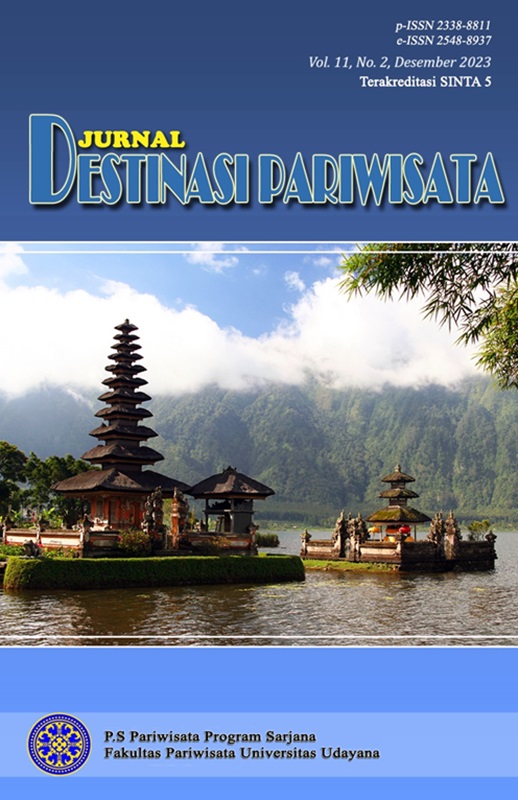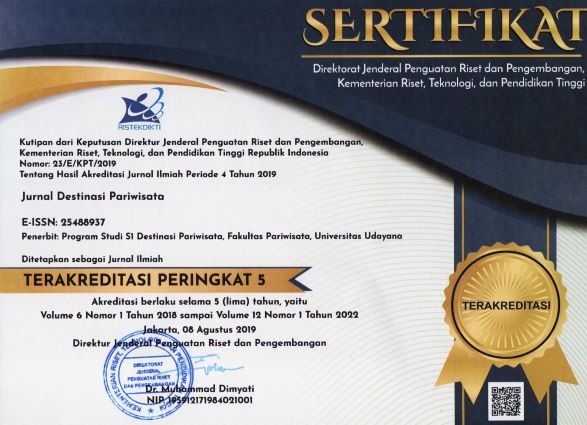Preferensi Wisatawan Terhadap Pemilihan Akomodasi Di Canggu
Abstract
Tourism in Indonesia is supported by lodging facilities as a place for tourists to stay. Indonesia is famous for its island of gods, namely Bali. Lodging facilities in Bali are diverse and the number is sufficient to meet the needs of foreign and national tourists who, after 3 years of the COVID-19 pandemic, are starting to arrive again. The number of foreign tourists, especially from Australia, has increased since 2022. This is a huge market potential for the government of Bali, especially the government of Canggu, to continue to develop the accommodation industry's marketing mix to meet the demand for foreign tourists, thereby encouraging the decision to stay. Demand is influenced by different preferences for the variety of accommodation available. This study aims to determine tourist preferences in choosing the type of accommodation used during their stay in Canggu. The research method used is descriptive interviews. The total data is five foreign tourists and five national tourists who have stayed in Canggu for more than three days. The data from the interviews were then analyzed using narrative analysis. There are six accommodation attributes, namely location, service quality, price, reputation, promotion, and program loyalty. Consumer preference attributes are gender, age, occupation, and income per month.
Keywords: Preference, Accommodation, Canggu
Downloads









